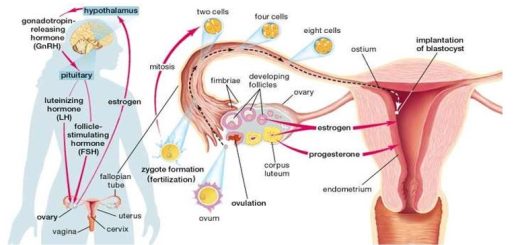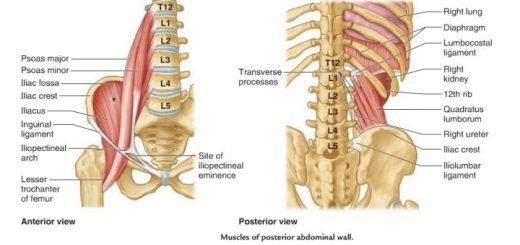Blood vessels of lower limb, Superior and Inferior gluteal artery, Femoral and Popliteal artery
Lower limbs share some vessels with the pelvis, popular iliac arteries arising from the aorta, they divide into internal and external iliac arteries, The external iliac artery supplies the blood to the lower limbs, The femoral artery is the main artery of the lower limb, It is a continuation of the external iliac artery (terminal branch of the abdominal aorta).
Blood vessels of the lower limb
The blood drains the lower limbs from the toes to the inferior vena cava, through deep & superficial veins, Deep veins begin with the toes’ digital veins, that drain into the plantar venous arch, which empties into the posterior tibial vein.
Arteries of the gluteal region
The superior gluteal artery
The superior gluteal artery is a branch from the internal iliac artery and it enters the gluteal region through the upper part of the greater sciatic foramen above the piriformis, It divides into branches which are distributed throughout the gluteal region.
Inferior gluteal artery
Inferior gluteal artery is a branch of the internal iliac artery and it enters the gluteal region through the lower part of the greater sciatic foramen, below the piriformis, It divides into numerous branches which are distributed throughout the gluteal region.
Blood supply of the head and neck of the femur comes from 3 sources:
- Blood ascending upwards from the shaft along the cancellous bone from the nutrient artery of the shaft.
- The retinacular supply from the vessels in the capsule of the hip joint comes from trochanteric anastomosis, These vessels form the main blood supply for the head and neck of the femur.
- Blood from the artery in the ligamentum teres (this is not a very important source).
Femoral artery
Femoral artery is the continuation of the external iliac artery at the mid-inguinal point. The artery descends across the femoral triangle to its apex, where it continues in the subsartorial (adductor canal). It terminates at the end of the adductor canal by passing through the adductor hiatus to continue as the popliteal artery.
Surface anatomy: It corresponds to the upper two-thirds of a line extends from the mid-inguinal point to the adductor tubercle when the thigh is flexed, abducted, and laterally rotated.
Relations:
- Medial: The femoral vein, which becomes posterior to it at the apex of the femoral triangle.
- Lateral: The femoral nerve.
- Posterior: Muscles of the floor of the femoral triangle and posterior wall of the femoral sheath.
- Anterior: Skin, superficial fascia, deep fascia, and anterior wall of the femoral sheath.
The triple relation between the femoral artery and femoral vein: At the base of the femoral triangle, the femoral vein is medial, at the apex of the triangle, the vein becomes deep (posterior) to the artery then it becomes lateral to the artery at the adductor hiatus.
Branches of the femoral artery:
- Superficial inguinal arteries: superficial epigastric artery, superficial external pudendal artery, and superficial circumflex iliac artery.
- Deep external pudendal artery: supply the external genitalia.
- Profunda femoris artery (The largest branch).
- Descending genicular artery: it anastomoses with the genicular branches of the popliteal artery.
Profunda femoris (Deep femoral artery)
It arises from the posterolateral aspect of the femoral artery one and half inches below the inguinal ligament.
Course:
It leaves the femoral triangle by passing between the pectineus and adductor longus muscles, It continues downwards behind the adductor longus muscle which separates it from the femoral artery, It ends by becoming the 4th perforating artery.
Branches:
- Lateral circumflex femoral artery: gives ascending, transverse, and descending branches.
- Medial circumflex femoral artery: gives: acetabular, ascending, and transverse branches.
- Perforating arteries: three perforating arteries and profunda femoris ends as the fourth perforating one.
Popliteal artery
The popliteal artery is the continuation of the femoral artery at the adductor hiatus.
Course: The popliteal artery is the deepest structure in the popliteal fossa:
- The popliteal artery descends on the popliteal surface of the femur, back of the knee joint, and popliteus muscle.
- In the upper part of the fossa, the popliteal vein and tibial nerve are lateral to the artery, while in the lower part they lie medial to it, after crossing superficial to the artery.
- Throughout the whole course, the vein lies between the artery and nerve.
- The artery terminates by dividing into anterior & posterior tibial arteries at the lower border of the popliteus muscle.
Branches:
- Muscular branches
- Cutaneoous branch
- Articular branches:
- Superior lateral genicular artery.
- Superior medial genicular artery.
- Medial genicular artery.
- Inferior lateral genicular artery.
- Interior medial genicular artery.
Deep fascia of the foot, Extensor expansion of toes, Dorsum and Sole of the foot
Leg nerves types, Injuries of nerves of the lower limb and Sciatica causes
Gluteal region structure, muscles, nerves and Posterior compartment of thigh muscles
Medial compartment of thigh muscles, Growth and regeneration of smooth muscle fibers
Arteries of leg and foot, Veins and Lymphatics of the lower limb













